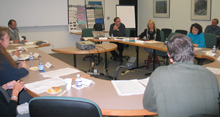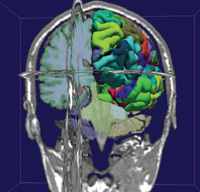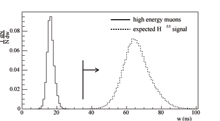 | Thursday, November 17, 2005 |
|
Thursday, November 17 11:00 Academic Lecture Series - 1 West Speaker: C. Quigg, Fermilab Title: The Electroweak Theory and Higgs Physics – Lecture 6 2:00 Accelerator Physics and Technology Seminar - 1 West (NOTE TIME) Speaker: M. Bai, Brookhaven National Laboratory Title: AC Dipole Based Diagnostics 2:30 Theoretical Physics Seminar - Curia II Speaker: M. Redi, New York University Title: Cosmic D-Strings as Axionic D-Term Strings 3:30 p.m. Director's Coffee Break - 2nd Flr X-Over Friday, November 18 |
|
Extended Forecast |
Secon Level 3 |
|
Thursday, November 17 -Minnesota Wild Rice w/Chicken -Tuna Melt on Nine Grain -BBQ Ribs -Chicken Casserole -Buffalo Chicken Wrap -Mexican Pizza -Chicken Pecan Salad Seasonal Changes in the Cafe Menu: There is now a daily oatmeal bar with all of your favorite toppings and chilli will be offered on Monday, Wednesday and Friday each week. The Wilson Hall Cafe accepts Visa, Master Card, Discover and American Express at Cash Register #1. |
|
Thursday, November 17
Wednesday, November 23
Chez Leon Menu |
| Fermilab Today is online at: http://www.fnal.gov/today/ Send comments and suggestions to today@fnal.gov Fermilab Today archive Hurricane Relief Page Fermilab Today PDF Version Fermilab Result of the Week archive Fermilab Safety Tip of the Week archive Linear Collider News archive Fermilab Today classifieds Subscribe/Unsubscribe to |
| DOE Press Release: Science.gov 3.0 Launched |
|
Offers Increased Precision Searches of Federal Science Database
WASHINGTON, DC—The latest version of Science.gov was launched today allowing more refined queries for searches of federal science databases. While Science.gov 3.0 is available to everyone, these improvements will be especially helpful to scientists and information specialists in their searches. “In these wonderful times for science, the tools by which we share science information must be extraordinary,” said Dr. Raymond Orbach, Director of DOE's Office of Science. “Science progresses when knowledge is shared and Science.gov 3.0 provides researchers with a tool to hone their queries, resulting in more precise results.”
Science.gov 3.0 introduces “MetaRank” which uses a sophisticated method for ranking science queries by searching “metadata,” or bibliographic information such as title, author, date, abstract or other keyword identifiers. This technology complements the relevancy ranking capabilities of QuickRank, which was introduced in version 2.0 and is still deployed on every search.
|
Grids and Gluons
|
|
CERN Press Release, November 16, 2005: CERN Awarded High-Performance Computing Prize at Supercomputing 2005
Geneva, 16 Nov 2005. CERN* has received the High Performance Computing (HPC) Public Awareness Award at a ceremony at Supercomputing 2005 in Seattle this week. Supercomputing 2005 is the foremost international conference for HPC. The award was presented by HPCwire, the leading HPC publication, as one of their 2005 Editors' Choice Awards, a category where the winner is determined by a panel of recognized HPC luminaries and contributing editors from industry. The award citation is for ‘Outstanding Achievement in Creating Public Awareness for the Contributions of High Performance Computing’, and reflects CERN’s high visibility in scientific computing through its lead role in some of the world’s largest and most ambitious international Grid projects.
|
| Double Jeopardy! Searching for Doubly-Charged Higgs Bosons at CDF | ||
| ||
|
One of the outstanding mysteries in particle physics is the mechanism by which particles acquire mass. The quantum theory known as the Standard Model has been very successful in describing the known fundamental forces; however this theory is obviously incomplete because it predicts all particles to be massless. A new particle, called the Higgs boson, has been hypothesized to fill in the missing piece of the puzzle by supplying mass to the fundamental particles. The plot thickens when we consider the recent observations of neutrino oscillations, implying that neutrinos have tiny but non-zero masses. An extension of the Standard Model which includes neutrino masses also predicts the existence of additional Higgs bosons, including one having twice the electron's charge! Searching for doubly-charged Higgs bosons is therefore very attractive, because of its multiple implications for new physics. Physicists at the CDF experiment have searched for a long-lived doubly-charged Higgs boson, which deposits four times the "ionization energy" than the typical singly-charged particle. Ionization energy deposition occurs when a charged particle traverses through a gas and strips electrons off atoms turning them into ions. This energy can be measured by CDF's gaseous tracking chamber. This search has extraordinary sensitivity: if one event having the signal characteristics were observed, the odds that it is background would be one in 30,000! In about 300 pb-1 of data, no candidate events were found. CDF set the best limits in the world on the pair-production of long-lived doubly-charged Higgs bosons: 133 GeV and 109 GeV, respectively, on the masses of long-lived doubly-charged Higgs bosons with left-handed (HL) and right-handed (HR) interactions, to be compared with the lower limit of 100 GeV from LEP. If the HL and HR bosons have the same mass, CDF's lower mass limit increases to 146 GeV. These results are published in Physical Review Letters. CDF has collected in excess of 1 fb-1 of data, and the search for this harbinger of new physics continues.
|
||
| ||
| Result of the Week Archive |
|
November 14 - 16 - Two stores provided 41 hours and 15 minutes of luminosity. - Safety system testing - Ground water in MI-40 - Stack dumped to fix AP2 vacuum
Read the Current Accelerator Update
|
|
Holiday Book Sale Your one stop shopping for the Holidays. The Fermilab Recreation will sponsor its annual Holiday Book Fair, hosted by Books are Fun, in the Atrium on Tuesday, November 29 from 10:00 a.m. until 6:00 p.m. and on Wednesday, November 30 from 7:00 a.m. until 3:00 p.m. The Book Fair accepts cash,check, MasterCard, Visa, American Express, and Discover card. Be sure to tell your spouse and mark your calendars now. A portion of the proceeds from the Book Fair subsidizes some of our Recreation Programs.
International Folk Dancing Fermilab Folk Club
|



